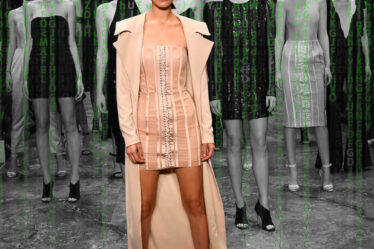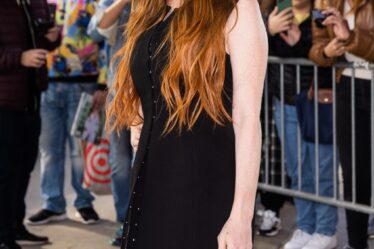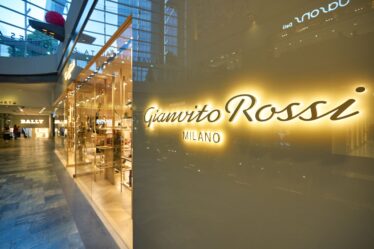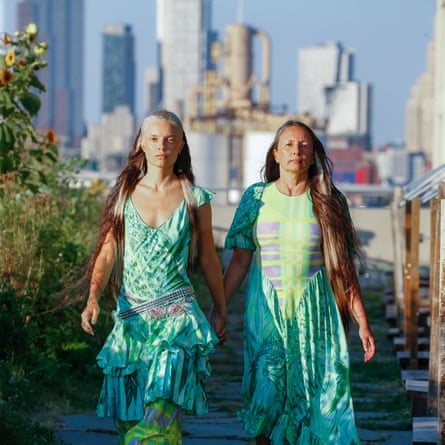
What do tropical fish, bubbles, green fields and dewdrops have in common? They are all visual markers of a mid-2000s aesthetic that is taking the TikTok generation by storm, amid a wave of nostalgia for a time when technology was seen as a path to a brighter future.
Dubbed Frutiger Aero by design gurus, the trend is named after the Swiss typesetter Adrian Frutiger whose lettering featured widely in early colour computers, and Windows Aero, a visual style embraced by Microsoft’s 2006 Vista software, with its screensavers depicting electric-green grass and impossibly blue skies.
On TikTok, the hashtag has had nearly 270m views and is populated with videos showing slides of Motorola flip-phones, bottlenose dolphins jumping out of swimming pools and the Apple logo filled with water and goldfish. On Youtube, viewers are tuning in to long soothing videos with titles like “30 Minutes of Frutiger Aero! for all your 2000’s nostalgia needs”.
The trend, say observers, is a reaction to a present-day dominated by apocalyptic warnings about AI’s power to destroy humanity, where the unchecked power, wealth and influence of Silicon Valley’s tech bros have made digital advances part of the problem rather than a chance at a solution.
Frutiger Aero harks back to a time of tech-optimism, a time before iPhones when computers – like Apple’s fruit “flavoured” iMac G3 in tangerine, lime and blueberry – were seen as more in tune with nature.
The buzzy New York fashion brand Collina Strada has flirted with the optimism of the design style with brightly coloured, nature-inspired clothing, while sellers on Etsy are crafting merchandise that harks back to it.
Photograph: Victor VIRGILE/Gamma-Rapho/Getty Images
The candy pink and blue can for Coca-Cola’s new Y3000 drink, promoted as having been designed with help from AI, has been cited as Frutiger Aero-esque: rooted in the natural world yet glossy and clean, it leans into calming blues, greens and the blurry-background bokeh effect. Frutiger Aero is the bottle of Palmolive soap that looks like an aquarium inside, and a fondness for Wii Sports, soundtrack and all.
“It’s the sense of relatability and friendliness that makes this aesthetic feel like a welcome respite from the chaos of the outside world,” says J’Nae Phillips, the culture editor, writer and author of the Fashion Tingz newsletter. “It feels comforting and commercially viable as it bridges the gap between tech utopia and dystopia, especially at a time when tensions are rising online and everyone’s just trying to navigate heated digital spaces.”
In 2023, it makes sense from a branding and business perspective because, as Anil Nataly, the creative director at Together Agency, explains: “[It] is the graphic design equivalent of a greatest hits album. It doesn’t just tug at the heartstrings of those who remember it the first time around, it’s got this shiny, ‘retro-futuristic’ sheen that even the TikTok generation can get behind. It’s like a cross-generational high five.”
Using it in business is, Nataly says, “a smart move”, because brands are “selling the future dressed in the past, and we’re all lining up for a taste”.
Ben D sells Frutiger Aero posters and stickers on Etsy, with his poster depicting dolphins and a planet filled with plants a bestseller. “To me, it represents a sustainable future, where rapid progress coexists with nature,” the 21-year-old says. “It is a futuristic and utopian style … yet it evokes nostalgia for the early 2000s, which felt like a simpler time.”
While younger audiences are drawn to its aura, for older followers of the Frutiger Aero “core”, it is a trip down memory lane. As one commenter put it on a TikTok video about the trend: “Frutiger Aero is the future we were promised and never delivered but it’s a future worth fighting for.”
after newsletter promotion
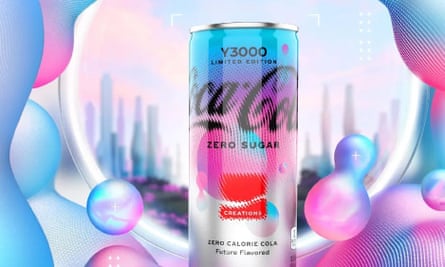
Sofia Lee, a visual artist based in the Netherlands, coined the term and would describe it as “humanist, skeuomorphic design”. Skeuomorphism refers to when objects mimic real-world objects, such as using a floppy disk to represent the save function or giving virtual icons on a screen shading to make them look like their 3D equivalents. Lee says it was “an attempt to make technology appear more naturalistic and organic”.
For “perhaps the most Frutiger Aero ever concentrated in one fictional character”, Lee looks to the robot EVE from the 2008 Pixar film WALL-E: “Her smooth levitation movements, the cyan LEDs for eyes, glossy black and glossy white, the ‘status LEDs’ hidden in the white torso that glow and fade in and out with a plant icon as if breathing when she enters a state of suspended motion.”
So why has it re-emerged now? It stands in contrast to the minimalist, restrained “flat design” movement which has dominated computer and smartphone design since the late 2010s, says Evan Collins, a designer and co-founder of the Consumer Aesthetics Research Institute (Cari), an online community dedicated to logging visual aesthetics in consumer culture. He says there has been a swing of the design pendulum away from the clinical and sterile towards “more maximalist ‘retro’ styles”.
The perky take on nature and the natural world feels at odds with the sadness of our current situation in the middle of climate chaos, the tangible and life-threatening signs of which are more widely and viscerally felt than in the 00s.
Lee says “the sense of hope it had [is] why it appears so appealing. Of course, this is not to say everything was wonderful at the time or that Frutiger Aero itself was not part of greenwashing campaigns – far from it. But I would say people are finding that Frutiger Aero at least projects something they feel the world has since lost.”

